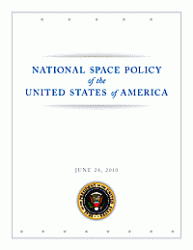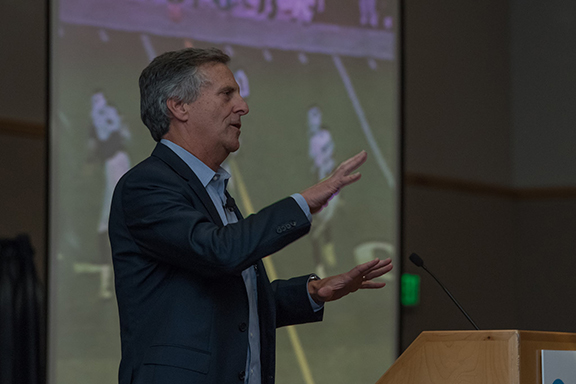
In his April 27 speech to the National Academy of Sciences (NAS) annual meeting, President Barack Obama twice singled out the Global Positioning System as an example of the need for renewing the U.S. commitment to basic scientific research and education.
“The calculations of today’s GPS satellites are based on the equations that Einstein put to paper more than a century ago,” Obama said, having noted that “no one can predict what new applications will be born of basic research. . . .”
In his April 27 speech to the National Academy of Sciences (NAS) annual meeting, President Barack Obama twice singled out the Global Positioning System as an example of the need for renewing the U.S. commitment to basic scientific research and education.
“The calculations of today’s GPS satellites are based on the equations that Einstein put to paper more than a century ago,” Obama said, having noted that “no one can predict what new applications will be born of basic research. . . .”
Indeed, the relative motions of GPS spacecraft and users, as well as the Earth’s gravitational field and rotation, introduce variables that the system’s designers solved by drawing on Einstein’s theories of special and general relativity — particularly the constancy of the speed of light and the principle of equivalence.
Obama’s second GPS reference came in highlighting the contributions of the Defense Advanced Research Projects Agency (DARPA), also naming stealth technology and the ARPAnet, forerunner to the Internet.
Although the agency’s connection to GPS today may be better known in connection the GPS-guided vehicles competing in the DARPA Grand Challenge and Urban Challenge, the agency supported several key GPS-related projects. Among these were DARPA’s backing of the GPS precursor, the Transit satellite navigation system, as well as digitalization of GPS signals, thereby allowing miniature GPS receivers to be mass-produced from very large-scale integration semiconductor chips.
Another implicit reference to GPS might be seen in the president’s support of space technologies for weather prediction and environmental monitoring. GPS occultation techniques have become an ever more refined and frequently used tool in the hands of meteorologists and atmospheric scientists.
And certainly GNSS technology with the potential efficiency brought with accurate positioning and navigation will contribute to Obama’s support for “development of new technologies to produce, use, and save energy” and meet the goal of reducing U.S. carbon pollution by more than 80 percent by 2050.
More generally, the nation’s GPS community had reason to be encouraged by the new administration’s approach to science and engineering. Obama’s budget proposal now before Congress would double the funding for the National Science Foundation (NSF), the National Institute of Standards and Technology, and the Department of Energy’s office of science.
The 2010 budget also triples the number of NSF graduate research fellowships and makes the research and experimentation tax credit permanent. Obama also emphasized the need to restore science, technology, engineering, and mathematics education as a top priority for high school students as well as though in colleges and universities.
“I want us all to think about new and creative ways to engage young people in science and engineering,” Obama said, “whether it’s science festivals or robotic competitions, fairs that encourage young people to create and build and invent — to be makers of things not just consumers of things.”
Established by Congress in 1863, the NAS is an honorific society of distinguished scholars engaged in scientific and engineering research, mandated to “investigate, examine, experiment, and report upon any subject of science or art” whenever called upon to do so by any department of the government.” Most of the NAS’s science policy and technical work is conducted by its operating arm, the National Research Council, created in 1916.





